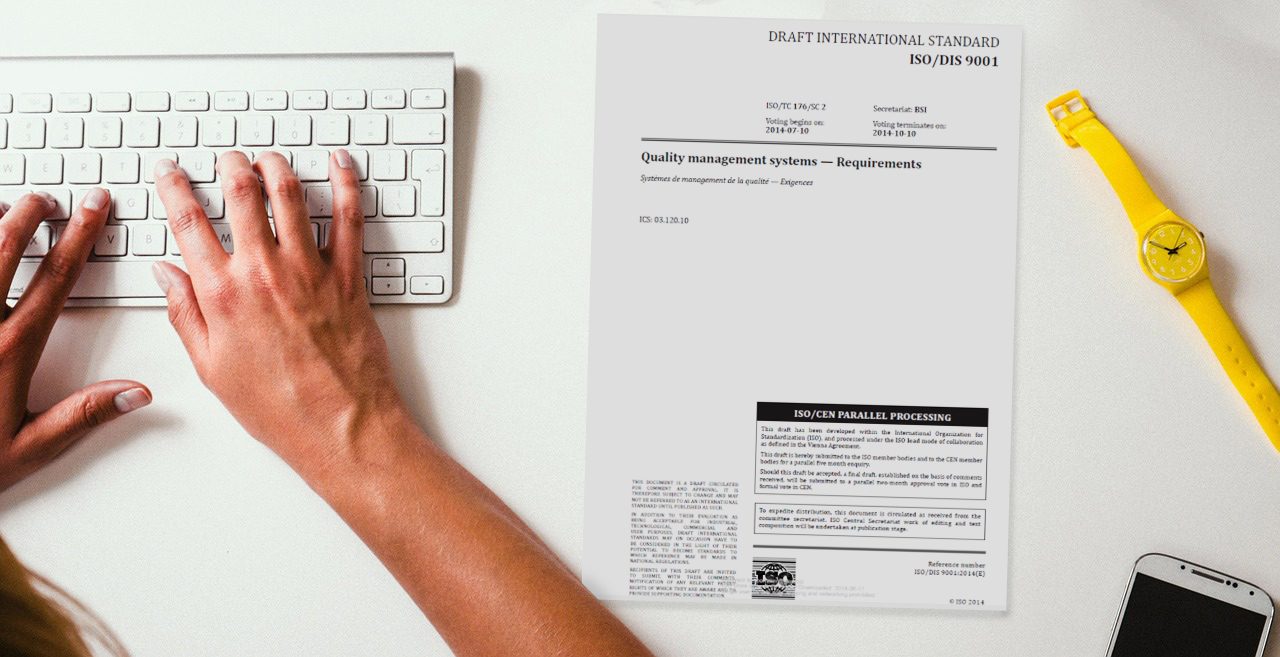
Useful ISO 9001:2015 Resources and Links

This is a list of useful ISO 9001 2015 resources. With this, we share our own research references. Read it to find summaries of different experts’ views and interpretations.
What is the likely impact of ISO 9001:2015?
The debate is on inside LinkedIn groups and other quality management for: Is the coming ISO 9001:2015 likely to have a significant impact on our management system, or will it simply be a question of terminology? The answer depends on the maturity of each organisation’s management system. Some organisations have a great experience and maturity level of quality management. Others have just obtained their certificates through lenient external auditors and are merely hanging it on the wall. These organisations have to rethink how they work with their management system – and take it much more seriously once ISO9001:2015 arrives. No matter which group your organisation belongs to, you should begin to consider the new ISO 9001:2015, if you want your organisation to be ready for later this year.
From reading a lot of expert interpretations we can conclude that they generally agree that ISO 9001:2015 is about:
- Involving top management and ensuring ownership.
- Ensuring the effectiveness of the actions that ensure quality.
- Implementing Risk Management and Risk-based-thinking into processes.
- Increasing process orientation.
- Updating terminology and ensuring alignment with other standards.
Now to what some of the experts in the area think are the most important key changes:
ISO 9001: 2015 resources from leading sources
Bureau Veritas’ view of the impact from ISO 9001:2015
Bureau Veritas is a global consultancy that delivers testing, inspection and certification services. They identify that ISO 9001:2015 will have a modernised approach to:
- Achieving value for the company and its customers. The new version emphasises results and performance improvements.
- “Risk-based-thinking” – a new term that becomes a part of the standard.
- Including more stakeholders than customers.
- Increasing the direct involvement of top management.
- Alignment across ISO standards to promote the integration of e.g. environment, quality and workplace safety into single management systems that are the domain of the QHSE, or Quality Health Safety Environment manager.
- Improved support for service organisations.
- Greater flexibility when it comes to what constitutes documentation – this means simplified requirements for documentation procedures. The “Quality manual” is no longer required.
Bureau Veritas has just held a conference in Denmark about ISO 9001:2015.
BSI Group’s view of changes from ISO 9001:2015
BSI is an international business standards company that helps organisations improve their business processes. The major changes that BSI emphasise from ISO 9001:2015 are:
- Removal of the “preventive action clause”. This means that companies must begin to consider the wider business environment; social, cultural and regulatory requirements, the goods and services that are offered as an organisation.
- Clause 5 regarding leadership require organisations to have greater alignment with business strategy and objectives.
- ISO 9001:2015 will force organisations to focus on the strategic objectives of the company.
- ISO 9001:2015 will bring Risk management into focus.
- Organisations will not have to change a large number of documents. In fact, ISO 9001:2015 requires less documentation than previously.
You can visit their website and read more about the revision. Or you can see the full video of the BSI changes below.
Paul Palmes key points
Paul Palmes is a member of the U.S. Technical Advisory Group to ISO Technical Committee 176, which is responsible for developing ISO 9001. Paul Palmes discuss the new version and what changes organisations can expect from the new ISO 9001:2015. Here are some of his key points:
Focus on Risk-Based Thinking – not Risk Management. This means:
- Less hunch, less guesswork.
- The companies must know its pros and cons.
The Quality system is now the business system, therefore:
- Quality and business are united.
- The business objectives are about to be the same as the quality objectives.
The biggest impacts ISO 9001:2015 will bring is:
- Changes to the overall structure.
- The new version is simplified in relation to the old structure.
- It will bring new titles to sections there weren’t there before.
- ISO 9001:2015 will bring a brand new look and feel for those companies who have experience in the field of quality.
- Duplicative effort and work can be reduced in terms of management.
Paul Palms’ advice when organisations have to transition to ISO 9001:2015:
- Companies must take their time to digest the new version and work it into the organisation – but do not lull, take the transition seriously.
- Start early to avoid the rush, but do not implement major changes before your final draft phase, as changes in the version might occur.
- Work your way into the standard and start with the top management so they can see the difference between the old and the new standard.
You can see the full video with Paul Palmes and his presentation of the version here.
Do your homework to prepare for ISO 9001:2015
One thing is what experts say but sometimes it’s better to go directly to the source. This is where you can obtain the original document for ISO 9001:2015 from ISO.
Want to read more about ISO 9001:2015? Read our article to get top management’s view and a case study about ISO 9001:2015 in small businesses.
Frequently Asked Questions
To earn ISO 9001:2015 certification, an organization must select a reputable certification body, understand the ISO requirements, implement and maintain a quality management system that adheres to these requirements, and then invite the certification body to audit and certify their system.
The cost for ISO 9001:2015 certification can vary widely, influenced by factors like the organization’s size, complexity of processes, the chosen certification body, and the location. Initial costs can range from a few thousand to several tens of thousands of dollars.
The ISO 9001:2015 assessments are done in two stages, which include a preliminary review and a detailed audit of the organization’s Quality Management System by the certification body. Once certified, organizations must undergo surveillance audits, typically every year, to maintain their certification.



